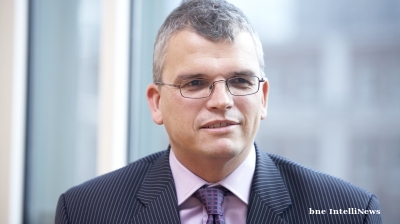ING: Armenian economy faces upside risk from Karabakh refugee influx but Ukraine war spillovers mostly positive

ING has initiated regular coverage of Armenia. The bank’s chief economist, CIS, Dmitry Dolgin and EM sovereign strategist James Wilson, take a broad look at what the recent geopolitical shift in the CIS region as well as domestic developments mean for the country’s economic activity, fiscal and monetary policy, interest and exchange rates. They also take a snapshot of what the bank sector lending looks like.
Country view: Armenia is exposed to external forces, benefiting from the influx of Russian immigrants, but facing risks from incoming refugees from Nagorno-Karabakh. The dram is now reversing following more than a year of strength.
Economic overview: The dissolution of Nagorno-Karabakh (Artsakh to Armenians), a breakaway state within Azerbaijan with an ethnic Armenian majority, is a big event for Armenia. While a full-scale war with Azerbaijan seems to have been avoided, the tensions are likely to remain.
The domestic political cost of the event and the upcoming inflow of 100-120 thousand ethnic Armenian refugees means upside risk to budget spending and the deficit.
Outside of tensions with Azerbaijan, the spillovers from the Russia-Ukraine conflict remain mostly positive, with GDP growth continuing to be above trend, despite some recent moderation. The flipside is elevated inflation risks and limited downside to the key rate.
Meanwhile, the exchange rate appears overvalued relative to peers, and the recent political event is a trigger for correction.
The country’s balance of payments seems to be gradually returning to normal following large inflows in 2022, but the recent ratings upgrade could potentially be favourable to portfolio flows after the correction.
Economic activity in Armenia is above-trend for the second year in a row, decelerating only modestly from 12.6% in 2022 to 12.3% YoY during 4Q ending mid-2023. 90% of this growth is assured by the construction, IT, trade and banking sectors, supported by the continued presence of Russian immigrants. Activity is financed by still elevated remittances of 10% GDP and accelerating retail lending (+40% YoY in July, 13.5% of GDP).
We see GDP growth at 8% this year and around 6% next year. However, the sense of defeat in the Karabakh story and influx of refugees may raise the risks to growth if there were to be social unrest and political instability.
Budget policy, which has been showing signs of restraint in 2022 amid windfall revenues, may now be on the verge of loosening.
The July data points to moderating revenue growth being outstripped by spending, which may be further pushed up by the upcoming inflow of as many as 120 thousand ethnic Armenians (4% of Armenia’s permanent population) from Nagorno-Karabakh, which has now been reintegrated into Azerbaijan after c. 30 years of breakaway status.
Currently, Armenian spending on defence and social support account for 13% of GDP and 50% of total spending. We estimate that additional social spending because of the refugees could total at least 1% of GDP, while military spending will have to remain elevated given Azerbaijan’s pressure to create a land bridge to its Nakhchivan exclave through Armenian territory.
We expect Armenia’s fiscal deficit widening from 2.2% of GDP in 2022 to 2.5-3.0% in 2023-25F, to be financed via both local and foreign debt. With public debt at 49% of GDP, the country has some room for new borrowing, but the FX-heavy debt is sensitive to depreciation risks.
Inflation and monetary policy: The flipside to the positive view on economic growth and the greater role of the budget policy in it, is elevated inflationary risks.
So far, Armenia’s CPI has enjoyed a rapid deceleration thanks to global food price deflation, stronger domestic currency, muted lending growth and fiscal consolidation. We see average inflation bottoming at 2.0-2.5% in 2023, but the reversal of the most disinflationary factors should lead to a subsequent acceleration to 4.0-4.5% in 2024-25, i.e., above the long-term target of 4.0%, which limits the downside to the key rate.
The window for a key rate cut will be the next couple of months when annual CPI will be pushed down by the high base effect. We see the key rate at 9.0% at the end of 2023 and 7.0-7.5% in 2024. This is still a decent downside from the current 9.75%, but risks to our rates view are tilted up.
Balance of payments and exchange rate: Armenia’s balance of payments is normalising after the Russia-related ‘disruption’ of 2022.
The current account balance is back to negative territory as of mid-2023 (both on a YTD and 4Q rolling basis), but the deficit so far is still much narrower than the usual 3.5-7.0% of GDP as it is still supported by the presence of Russian immigrants in two channels.
Firstly, net remittances inflows are still higher than usual at US$1.0bn but have moderated to US$2.5bn on a 12M rolling basis in July 2023 vs the peak US$3.0bn as of end-2022.
Secondly, the services exports (hotels) are benefiting from the inflow of people. The private capital flow balance appears positive, and the recent upgrade in the ratings to BB- by S&P and Fitch and improved outlook by Moody’s to stable (Ba3) should be supportive. However, the flare-up of tensions with Azerbaijan is a factor of concern.
Given the gradual normalisation of the balance of payments, the AMD’s scope for appreciation seems exhausted.
The dram was already an outlier in the CIS space after the 26% rally vs USD between February 2022 and mid-September 2023. We do not exclude a 10% USD/AMD drop in 4Q23 and a continued decline in 2024.
We view Armenia’s defeat over the Nagorno-Karabakh breakaway state as a trigger but not the fundamental reason for the reversal in the AMD trend.
Opinion

COMMENT: Why Beijing will never take Taiwan
Xi Jinping needs to think again before he sends so many young Chinese men and women to their deaths on Taiwan, for if the PLA does one day dare to land, they will be buried here.

COMMENT: Ukraine’s coming financial storm
“A crisis is drawing ever closer. It will break in Ukraine, but it won’t begin on the frontlines, where the country’s battle-weary brigades continue to impose a brutal cost on the Russian invader," writes Timothy Ash of BlueBay Asset Management.

BEYOND THE BOSPORUS: Performance postponed. Hotly anticipated “CHP” trial pushed into October
Every Turk up and down the country has an opinion on what Erdogan is up to.

COMMENT: Europe’s summer of humiliation
This summer started with optimism around trade deals and progress in Ukraine, but quickly unravelled. Trade uncertainty is back, the war drags on with rising casualties, and Europe is now grappling with a raft of political crises.















